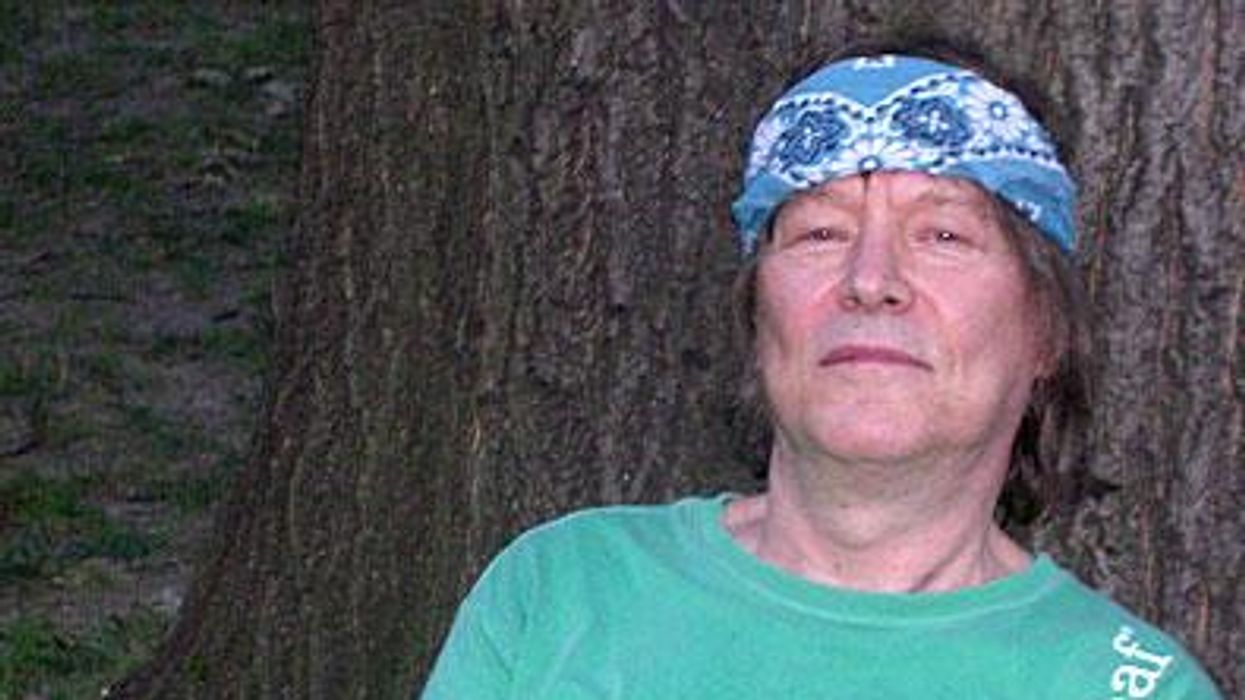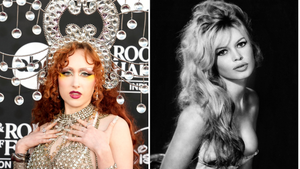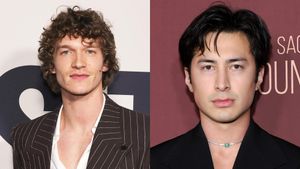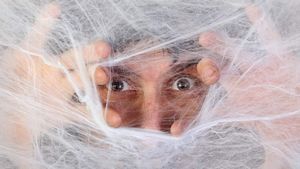Hair is the outrageous, groundbreaking, influential, and very bisexual rock musical that altered the social and sexual landscape in America, changed the modern musical and helped turn public opinion against the Vietnam War. It was the first rock musical on Broadway, the first Broadway show to feature full nudity (by the entire cast, no less), and the first to feature a same-sex kiss. The Broadway production got two Tony nominations, and the cast album went to number 1 on the music charts, scoring a Grammy and spawning four number 1 singles. Many artists -- including Liza Minnelli, Barbra Streisand, the Fifth Dimension, Three Dog Night, the Cowsills, and Nina Simone --covered songs from Hair. According to ASCAP, "Aquarius" was played more frequently on U.S. radio and television than any other song in 1970. Hair was even made into a film in 1979. Since its first performance in 1967, as the play that inaugurated Joseph Papp's then-new Public Theater in New York City's East Village, Hair has been performed almost continuously around the world. Over 40 years after Hair first hit the stage at the Public, it has come full circle and is now playing at the Public's Delacorte Theater in Central Park.
Without Hair, there would have been no Rent, no Cats, no Equus, or even Naked Boys Singing. And without James Rado, the cocreator of the musical, who also starred in the role of Claude on Broadway and has directed many productions of it since, there would be no Hair.
Though synonymous with the production now, Rado was an actor in his own right before the musical's success. He originated the role of Richard the Lionhearted in A Lion in Winter on Broadway, and when he was cast in an off-Broadway musical, Hang Down Your Head and Die, Rado met Hair cocreator Gerome Ragni. The two became fast friends -- a friendship that far outlasted that show, which closed after one night.
Although Rado was enjoying some success as an actor, he had always wanted to create a musical. "That's where my real heart lay creatively.... that was the ultimate to me," he says.
Ragni was equally interested in creating a new kind of show and had already been very involved with the experimental Open Theater. The two came up with the idea of capturing what was going on in the Hippie scene in musical form. They moved into a small apartment in Hoboken, N.J., together and started writing Hair in every spare moment either in longhand or on a typewriter they'd borrowed from their landlord.
Contrary to what has been written, they were not out-of-work actors trying to write themselves a job; they were acting and auditioning all through the script-writing process. At one point Jim was in a touring company, and Jerry followed him on the road so they could write between performances.
While they were still working on Hair, Rado got the male lead in a Broadway musical called Hallelujah, Baby! His photo even appeared in the New York Post with the announcement he was to star, but he backed out and took a risk on his as-yet-unproduced show because it was his dream. At the time, everyone except Rado and Ragni thought it was a stupid move. The words 'you'll never work in this town again' were uttered by everybody! says Rado. "They continued to say that even after Hair," he adds "especially after Hair."
In the mid '60s, a radical rock musical about pansexual, antiwar hippies with a multiracial cast was a tough sell on "the Great White Way." After knocking on every Broadway producer's door and being turned away, Ragni's chance meeting with Joe Papp -- on a train back from Yale, where Papp was teaching a course on Shakespeare and Ragni was performing in a play -- turned the tide. After 13 years of Shakespeare in the Park, Papp decided to book Hair to open his new Public Theater, which has since become a revered cultural institution.
Ironically, for two guys writing a hippie musical called Hair, "we had short hair when we started writing it," says Rado, but they stopped cutting it and let it grow. "Jerry had no idea what would happen, because he had never in his life let his hair grow, as most guys hadn't. When he let it grow, it was huge -- it just didn't stop growing. Just huge, tremendous locks. I was very jealous of that .... My hair would not grow out that way."
The show's pansexual sensuality mirrors what was going on in the hippie scene at the time. "To have intimations of these kinds of other relationships on stage, rather than just boy meets girl," says Rado, "that was just very organic to what we were writing about: the hippie scene. It was truly about men loving each other as opposed to fighting each other."
While hanging around in hippie communities, Rado had experiences that were very new, such as open affection between men, which was very different from the cultural norm at the time. According to Rado, "The hippie scene was very free. [There was] male-to-male bonding and hugging and being very affectionate. There was a wonderful warmth in the hippie atmosphere, a sense of freedom. Men would just come up to you and take you in their arms, and it was so freeing and felt so good. It's a psychological truth that had been so blocked from human behavior."
At the center of Hair's pansexual tribe is a bisexual love triangle between the characters of Berger, Sheila, and Claude. But it becomes clear that the central love relationship in the show is between Claude and Berger, the characters based on Rado and Ragni, whom they ended up playing on stage on a nightly basis.
"It made a point of the love between two men -- not only two men, but there were very strong male relationships written into the play," says Rado "Claude and Berger have a strong tie, but Berger has this sidekick, Woof, and Woof has his sidekick. There's a whole bunch of male relationships in addition to the traditional male-female love stories. We have the Sheila and Jeannie love stories with Claude and Berger. But we also have other things happening. Girls with girls, boys with boys as part of the tribal behavior and also the characters of Claude and Berger. With all people in the tribe there was affection and physicality. And that was something very, very new: that kind of behavior on a stage."
The infamous nude scene in Hair was inspired by an event that took place during a Be-In in Central Park that attracted a crowd of 10,000. "These two guys in the midst took their clothes off, and everybody was just amazed and astounded, just like an audience," says Rado. "It sent them into this incredible place they had never been before." Apparently, a plainclothesman, rushed out to inform the mounted police who were circling the crowd on horseback. "Thirty policemen on 30 horses moved in on the crowd to arrest somebody. But the crowd turned to the policemen and started chanting 'We love cops, we love cops.' As they were chanting this, the two guys who had taken their clothes off, disappeared into the crowd and put their clothes on. So there was no one arrested. It was the perfect hippie happening, and we felt it had to be in the play."
The fact that nudity had never been done on the Broadway stage before did not deter Rado. "We wanted frontal. We wanted it all up front," he says. "We wanted to excite the audience and go places they hadn't been before."
Joe Papp nixed the nude scene for the original Public Theater production. When they rewrote Hair for Broadway, they wanted to put it back in. There was a statute on the books in New York City that said nudity was permitted on stage as long as the actors weren't moving. Which is why, back in the 60's and 70's, the whole cast stood on stage together in a row, nude and perfectly still. Today, they are free to sway to the music.
Rado and Ragni lied about their ages back when Hair was about to open at the Public in 1967. Rado and Ragni were actually in their 30s in an era when 30 was considered the expiration date of the younger generation. "Don't trust anyone over 30" was an often-repeated phrase. They split the difference, and said they were in their twenties, subtracting eight years off their ages. Born in 1932, Rado is now 76 but still looks 10 to 15 years younger, so it's easy to see how he got away with it.
They did six months on Broadway, then six in Los Angeles. One day they spontaneously sauntered down the aisle of the theater nude during intermission. "The lights came up after the nude scene [which was darkened] and we walked down the aisle naked," remembers Rado. The producers got wind of their prank, and the next day they were met with a phalanx of armed guards when they showed up for work: they were banned from the theater. They flew back to New York only to find armed guards barring their way into Hair's Broadway production as well. They were banned from the show they had created. In desperation, "we ripped a sheet off the bed in the hotel where we were staying, a big white sheet, and we wrote on it 'We want our baby back,' " Rado chuckles. Eventually, there was a negotiation, and they were let back into the show.
Rado and Ragni were collaborators, coconspirators, and best friends, but this is the first time Rado, who ironically considers himself a very private person, has been willing to open up and reveal they were also lovers. "It was a deep, lifelong friendship and a love of my life," he says. Of course, their relationship was no secret to cast members and friends, but in interviews they didn't talk about it.
The pair continued to collaborate on other projects after Hair: two musicals entitled Sun and American Soldier. Unfortunately, their collaboration ended when Jerry passed away from cancer in 1991. Rado has finished the projects himself and is currently seeking a producer.
Rado has had other loves, but in hippie fashion, does not identify with any one sexuality. "In answer to your probing inquiry," he says, "I pretty much consider myself to be omnisexual."
So the bisexuality in Hair was not a 1960s cover for being gay. It was the true expression of Ragni and Rado who, although able to respond to more than one gender (Ragni was married and had a son Eric before meeting Rado), were engaged in a love relationship with each other based on profound friendship and deepened by professional collaboration.




































































Charlie Kirk DID say stoning gay people was the 'perfect law' — and these other heinous quotes